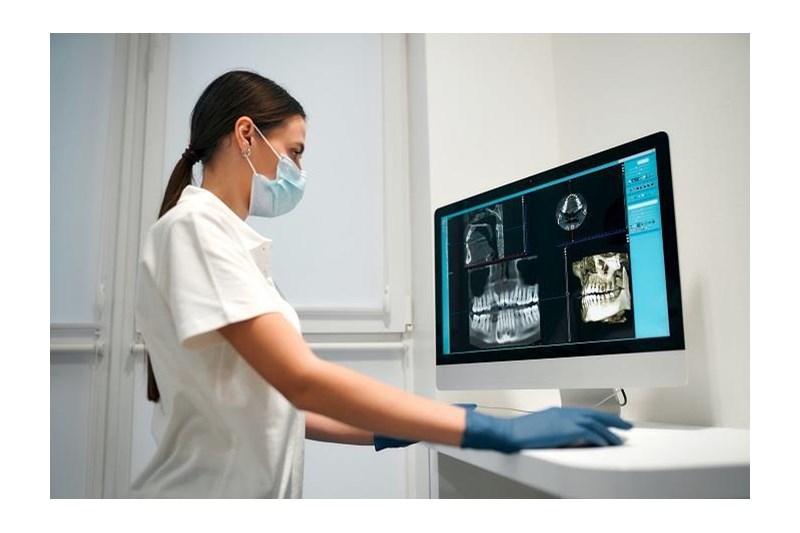Midlands radiology training gets £1.28m AI upgrade
Published: 08/12/2023
Patients and clinicians across the Midlands – and potentially across England – are to benefit from a £1.28m AI upgrade to radiology training facilities at County Hospital in Stafford.
NHS England – Midlands provided the funding to develop a new training model at the Midlands Imaging Training Academy (MITA), allowing one consultant to simultaneously train and supervise learners across all regional academy sites, giving other consultants more time to spend with patients.
The new electronics and picture archiving suite (EPACS) is being piloted as a platform to develop AI learning and cooperation in imaging academies, with eye tracking teaching the AI algorithms based on human behaviours.
Using the newly installed XRNET high-speed education network and state-of-the-art EPACS workstations, it’s now possible for remote trainers to teach and observe trainees in real-time and to link education facilities and other national academies to share and collaborate using high-definition imaging.
When used with the already successful extended reality lab (ERL) trainees could be immersed in different spaces, such as an MRI scanning suite or an A&E ward, providing lifelike, high-quality simulation training to teams of clinicians.
Ingrid Britton, midlands imaging training academy director and gastrointestinal radiologist, said, “The investment from NHS England has allowed us to upgrade our facilities to provide state-of-the-art imaging training to our imaging staff, with the potential to link classrooms across the Midlands. This expands the capacity for training and has allowed us to increase the number of trainees providing diagnostic and therapeutic services to patients on emergency, elective and cancer pathways.
“The new simulation facilities for ultrasound supervision, CT and vascular diagnostic and interventional procedural work provide excellent learning practice to get students work ready for the fast-paced clinical environment.”
Tom Kirkbride, joint director for Workforce, Training and Education at NHS England – Midlands, said, “This model is an example of how we are investing in services as part of the NHS Long Term Workforce Plan, to reform the way our healthcare staff work, harnessing new digital technology to allow them to focus on patient care.
“It is a huge benefit to patients, and we expect it to have a positive impact on winter pressures, as more of our imaging workforce can be trained by fewer consultants across a large geographical area, freeing up other consultants to have more time for patient care. Over time it should result in less travel time for clinicians to attend training, less costs to the NHS and lead to waiting lists being cut.
“This could be the first of a network built around the country to benefit patients and clinicians nationally and could potentially be available worldwide to deliver familiarisation training for international recruits, before they come to the UK to start work in the NHS.”
Author: N/A













